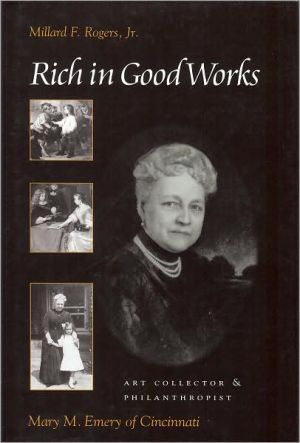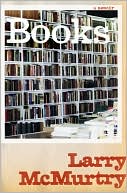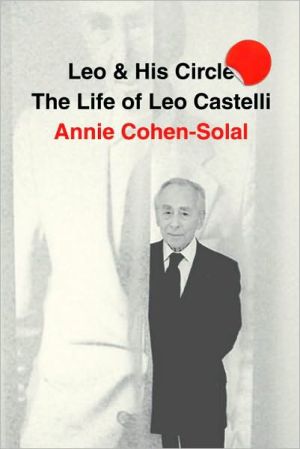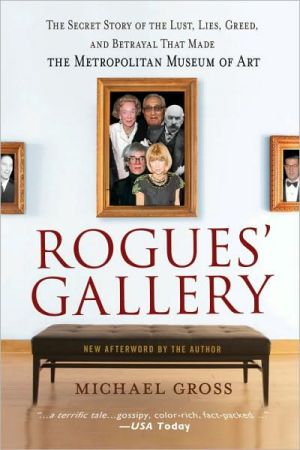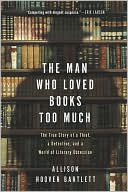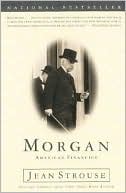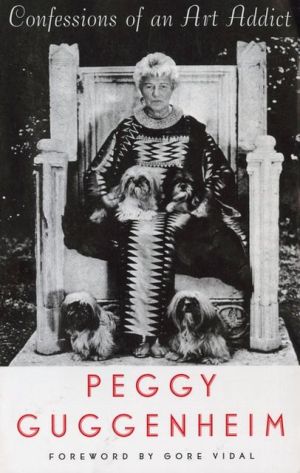Rich in Good Works: Art Collector and Philnathropist - Mary M. Emery of Cincinnati
At the death of her husband in 1906, Mary Muhlenberg Emery (1844-1927) became one of the richest women in the United States. Recognizing her vast responsibility, she embarked on a philanthropic program that endowed or initiated children's programs, hospitals and medical institutions, orphanages, colleges and universities, an art museum, a zoological park, various cultural agencies, and other causes that benefited humankind. Mary Emery's most costly benefactions were directed to the founding...
Search in google:
At the death of her husband in 1906, Mary Muhlenberg Emery (1844-1927) became one of the richest women in the United States. Recognizing her vast responsibility, she embarked on a philanthropic program that endowed or initiated children's programs, hospitals and medical institutions, orphanages, colleges and universities, an art museum, a zoological park, various cultural agencies, and other causes that benefited humankind. Mary Emery's most costly benefactions were directed to the founding of Mariemont, Ohio, a planned community near Cincinnati, and to the formation of a major collection of paintings. Her paintings by such old masters as Titian, Mantegna, Van Dyck, Gainsborough, and Hals were bequeathed to the Cincinnati Art Museum. This well-illustrated biography explores her gifts and life from its beginnings in New York City through family tragedies to the legacy she left behind.BooknewsWith the support of a grant from the Thomas J. Emery Memorial, Rogers (Director, emeritus, of the Cincinnati Art Museum) describes the life and work of Mary M. Emery (1844-1927), a Cincinnati resident and one of the richest women in the US at the time whose philanthropic work assisted dozens of important social and educational programs including Mariemont, a planned community initiated by Mary Emery, and the Cincinnati Art Museum. Annotation c. Book News, Inc., Portland, OR (booknews.com)
Rich in Good Works\ Mary M. Emery of Cincinnati \ \ By Millard F. Rogers Jr. \ The University of Akron Press\ ISBN: 1-884836-66-6 \ \ \ Chapter One\ The Girl from New York and the Emery Family \ Walking through his darkened and steam-filled factory on December 30, 1857, Thomas J. Emery, Sr., stepped into an open hatchway, falling four floors to his death. The founder of an impressive Cincinnati dynasty of manufacturers, real estate developers, and philanthropists, and Englishman who emigrated some twenty-five years earlier, he ended his life in the candle and lard oil factory that launched his fortune and that of his heirs. One day after the accident, a Cincinnati newspaper announced in its headlines, "Death of Thomas Emery, Esq.-Melancholy Occurrence," and elaborated on the circumstances in a brief article.\ Mr. Emery had recently completed an extensive building on the corner of Vine and Water Street for the manufacture of Lard Oil and Candles, and the machinery was being put into operation yesterday for the first time. About 5 o'clock, he was in the fourth story of the building. There was considerable steam in the apartment, and this with the heavy weather that prevailed, rendered it quite dark. In walking about he accidentally stepped into the hatchway and fell through the several floors, into the cellar, a distance of about sixty feet. One of the lads working on the floor from which he fell, saw him fall through the hatchway, and ran down stairs as rapidlyas possible. In his excitement he fell from the first floor into the cellar, and was much injured. When Mr. Emery was taken up, a few minutes after the accident occurred, he was dead. Several of his bones were badly fractured, and the probability is that he was undoubtedly dead before he reached the cellar.\ Thomas Emery was fifty-nine years old in 1857. He had been a Cincinnati resident since at least 1832, when he began his prosperous career there. On December 19, 1832, Emery advertised for the first time in the Cincinnati Daily Gazette, announcing himself as a "land agent" with a downtown office. This first announcement of his commercial venture, selling land and buildings, was repeated regularly in the newspaper's subsequent advertisements. Scattered among notices selling cough syrups, rewards for runaway slaves, and inducements to purchase barrel staves, Emery's real estate focus persisted throughout 1833.\ From its beginnings in the late eighteenth century and into the twentieth, Cincinnati was a mecca for land speculators and real estate investors, as proved by the many advertisements in local newspapers. Residential and commercial buildings jockeyed for good locations throughout the city's core, a basin hemmed in by hills in all directions except to the south, where the river was a natural barrier. Real estate speculation prospered, as there was abundant undeveloped land, and investors could purchase land with little capital and watch it grow in value as additional speculators took advantage of the booming economy in the 1830s. Cincinnati was a merchant's city, and idle cash always sought channels for investment. Thomas Emery, the immigrant, perceived this, as did his sons in the decades after their father's death.\ Emery was born in Bedford, England, on December 15, 1798. Possibly he worked in a London bank as a young man before setting out for America. He was already married with two children when he reached Cincinnati by 1832. Certainly he had some capital, for his enterprise as land agent required cash investments. Emery worked quickly to enlist the support of prominent Cincinnatians, men like Nicholas Longworth and Daniel Gano, recording their names and others as references in his advertisements beginning June 26, 1833, in the Cincinnati Daily Gazette. A measure of success came quickly, for Emery moved his office that same year to 11 East Fourth, on the city's prestigious business street. There he maintained his residence as well. City directories illustrated a three-story building housing a street-level office with two floors of rooms above, the shuttered windows hung with ruffled curtains appropriate for a young, already prosperous family man. This first known home for the Emery family in Cincinnati, its plain Federal-style facade opening directly onto the street, carried a large sign above the front door: Thomas Emery. There, Thomas and his wife, Kezia Brown Emery (1808/9-1876), lived with their two children who were born abroad, Kezia (1828-1900) and Thomas Josephus (1830-1906), who gave his birthplace as Newport, Wales.\ When Emery arrived in Cincinnati with his wife and two children, the city was devastated by a cholera epidemic, and floodwaters reached sixty-two feet above low-water mark on the Ohio River. Boats docked four blocks up from the landing at Pearl and Main Streets, and river traffic was treacherous. Trade flourished in the city in spite of these calamities. A visitor to the city in 1832, Colonel Thomas Hamilton, recorded his impressions of the bustling town of over 28,000 residents where Emery established his business.\ [Cincinnati] is, apparently, a place of considerable trade. The quay was covered with articles of traffic; and there are a thousand indications of activity and business which strike the senses of the traveler, but which he would find it difficult to describe. Having nothing better to do, I took a stroll about the town, and its first favorable impression was not diminished by closer inspection. Many of the streets would have been considered handsome in New York or Philadelphia; and, in the private dwellings, considerable attention had been paid to external decoration. The most remarkable object in Cincinnati, however, is a large Graeco-Moresco-Gothic-Chinese-looking building, an architectural compilation of prettiness of all sorts, the effect of which is eminently grotesque.\ This "most remarkable object" was the Bazaar of Mrs. Frances Trollope, the commercial enterprise of a strange, flamboyant English lady who hoped to bring her tasteful goods and wares to a backward western town she thought was starving for sophistication.\ Branching out by 1836 in other enterprises, Emery pere joined another transplanted Englishman, Isaac A. Davenport, in the grocery, wine, and hops business, while retaining his land agency. His partnership with Davenport apparently ended in 1839, when their joint advertisements ceased. Falling back on his occupation as estate and money agent, Emery pursued that trade until it failed in the recession of 1841. Apparently he suffered losses but was diligent in repaying his creditors. Thomas Emery recovered and was released from any liability, according to the Cincinnati newspaper that announced his fatal accident while recording his charitable character.\ "He has since been very successful in business, and had accumulated a fair amount of wealth. Mr. Emery was a quiet and unassuming man, strictly conscientious in all his dealings, and was much respected by his fellow citizens. In his charities he was systematic and liberal. He made it a point never to refuse to give for a worthy object, or to permit himself to be asked the second time. He seemed to regard it a privilege to contribute towards relieving the wants of his fellow creatures, or to promote the general interests of the community."\ Between the date of Cincinnati's founding in 1788 and Thomas Emery's death in the mid-nineteenth century, the Queen City of the West, as Henry Wadsworth Longfellow had dubbed the city, expanded its grid of streets reaching up from the muddy Ohio. It continued its economic reliance on the river artery of trade and commerce that led down to the Mississippi. Merchants called her the Tyre of the West. The more unseemly title, Porkopolis, was derived from the meatpacking industry and slaughterhouses that flourished throughout the city. By 1850, with a population of just over 115,000, Cincinnati was the nation's center for the whiskey and hog markets, both dependent on corn, a major agricultural crop of the fertile farmlands both north and south of the Ohio River. And from the by-products of meatpacking came candles and lard oil, the two products responsible for the future financial empire of Emery's two sons.\ Breweries and lard oil factories were so numerous that a Cincinnati historian, writing in 1851, bragged with statistics that are remarkable for the numbers that elucidate a commodity practically unknown today.\ There are probably thirty lard oil factories here, on a scale of more or less importance. Eleven million pounds of lard were run into lard oil that year, two-sevenths of which aggregate made stearine; the residue, lard oil, or in other words, twenty-four thousand barrels of lard oil, of forty to forty-two gallons each. The oil is exported to foreign countries.... Lard oil, beside being sold for what it actually is, enters largely, in the eastern cities, into the adulteration of sperm oil, and in France, serves to reduce the cost of olive oil. We now come to the star candles, made of the stearine expressed from the lard in manufacture of lard oil.\ Emery's lard oil factory was one of thirty similar industries that may have existed in Cincinnati on or near Water Street as early as 1846. Emery's location at 33-35 Water Street, one short block from the river, abutted the boat landing and was certainly at that site by 1850-1851. In 1853, city directories carried the first mention of the oldest Emery son, Thomas J., who was then twenty-three years old and already a clerk in his father's factory. He attended Woodward College, as Woodward High School in Cincinnati then was called, until age sixteen, when he entered the family business in a minor capacity. By 1856, the company was styled "Thomas Emery and Son," a title it would bear until the agreement with their widowed mother later established a new company entity. Of the six children of Thomas and Kezia Emery, the three sons officially entered the family business in 1859. That business, although initiated with a real estate and money agent focus, derived its early prosperity from candle making; and that was linked to Cincinnati's hog-slaughtering industry and its by-product of grease from animal fat. The Emery brothers acknowledged their indebtedness. "In the candle business we had a new process of distilling cheap greases; our competitors were using costly tallow and lard. Candles were high and our profits large for a number of years." In a handwritten agreement between the widow, Kezia, and her sons Thomas J. and John J., with J. Howard witnessing, a partnership called "Thomas Emery's Sons" was formed that would prosper throughout the nineteenth century and well into the twentieth. It would expand from lard oil and candles into real estate and housing, creating nationwide holdings and the foundation of wealth for a remarkable lady, Mary Muhlenberg Hopkins Emery.\ Mary was born during the second marriage of a widow and a widower. Her parents had eastern and mid-western backgrounds, with her father's heritage extending back to a passenger on the Mayflower. Her mother descended from a pioneer of the western frontier, as Ohio was considered in the early nineteenth century. Mary's rearing and education centered in New York and Brooklyn, and this afforded her the sophistication and training a well-bred young lady might acquire in America's largest city. By the time she reached Cincinnati, she was educated beyond the usual level of her peers. Mary's sensible, middle-class family values supported her throughout her life, with her retiring nature complementing that of her husband, even as his considerable wealth registered the couple among the nation's upper-class millionaires. While Mary's family life in the East does not compare with the Emerys' colorful saga in Cincinnati, her story after her marriage to Thomas J. Emery is one of warmth and tragedy, philanthropy and compassion, riches and loneliness.\ (Continues...)\ \ \ \ \ Excerpted from Rich in Good Works by Millard F. Rogers Jr. Excerpted by permission.\ All rights reserved. No part of this excerpt may be reproduced or reprinted without permission in writing from the publisher.\ Excerpts are provided by Dial-A-Book Inc. solely for the personal use of visitors to this web site. \ \
\ BooknewsWith the support of a grant from the Thomas J. Emery Memorial, Rogers (Director, emeritus, of the Cincinnati Art Museum) describes the life and work of Mary M. Emery (1844-1927), a Cincinnati resident and one of the richest women in the US at the time whose philanthropic work assisted dozens of important social and educational programs including Mariemont, a planned community initiated by Mary Emery, and the Cincinnati Art Museum. Annotation c. Book News, Inc., Portland, OR (booknews.com)\ \ \ \ \ News reports and short fictionalized accounts about the moneyed class offer a slim look into the lives of the wealthy, and sometimes only serve to reinforce stereotypical ideas that prevail with regard to the rich. For readers in search of both an explicit examination of an affluent life and a main character of absolute character, there is Rich in Good Works.This book is a skillfully rendered full-length portrait of Mary M. Emery, a woman reared in an environment of middle-class values who lived to become a remarkable humanitarian in disbursing her wealth for the betterment of society. Born on Dec. 19, 1844 in New York City and married on May 24, 1866 in Cincinnati to Thomas J. Emery, a bashful Mary M. Emery became part of the elite class, traveled abroad, and suffered tragic losses with the death of both of her sons, and later, her husband in 1906. As heir to a fortune amassed by her husband through land acquisitions and construction of residential and commercial buildings in Cincinnati, not to mention operation of an income-rich oil and candle factory near the Ohio River, Emery embarked on a path that most likely bewildered and delighted critics of the wealthy at the time—she embraced philanthropist Andrew Carnegie's creed that surplus wealth "is a sacred trust" to be administered "by its possessor for the best good of his fellow-men." During the two decades after her husband's death, Emery, guided by surrogate son and advisor Charles J. Livingood, contributed a total of more than twenty million dollars to a long list of causes and organizations. "Ambition for my children was denied me, yet I had them long enough to know and sympathize with all youth and its struggles in the world," she wrote in a letter to American author Dorothy Canfield Fisher. Emery demonstrated her empathy for the young with contributions such as $250,000 to the University of Cincinnati Medical School, Department of Pediatrics; $565,000 to YMCA Central in Cincinnati; and $1.5 million to the Ohio Mechanics Institute and Emery Auditorium in Cincinnati. The Cincinnati Art Museum, as well as a planned community in Cincinnati, that was christened Mariemont after Emery's estate in Rhode Island, were noteworthy in her life. The museum saw construction of a new wing and was bequeathed her collection of paintings by European masters, and the Mariemont community was founded with seven million dollars contributed from 1910 until her death in 1927. As the director of the Cincinnati Art Museum from 1974 to 1994, and as a resident of Mariemont, the author was drawn implicitly into Emery's life story.\ \
